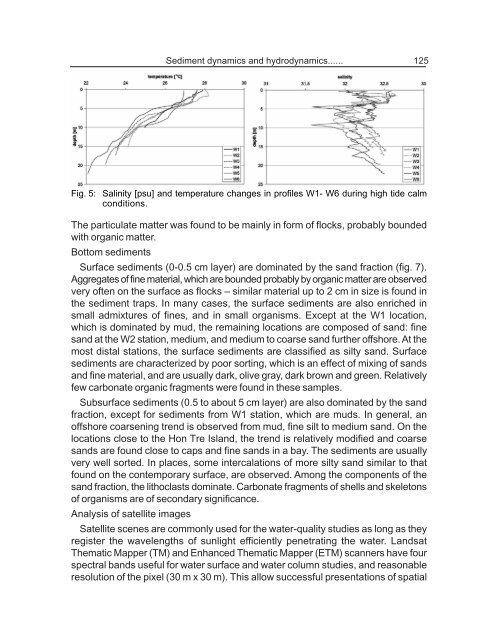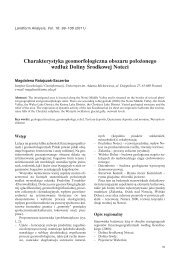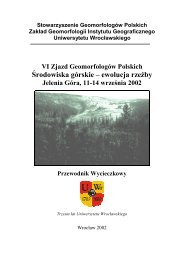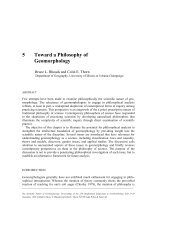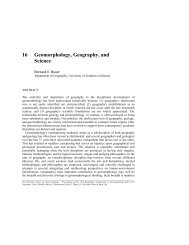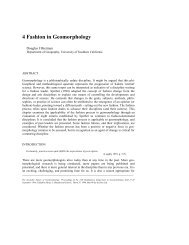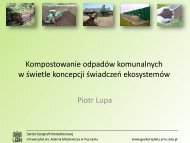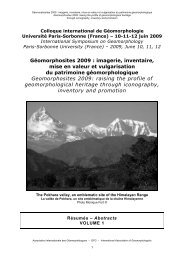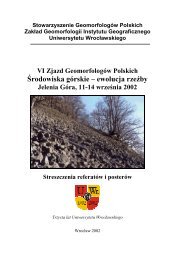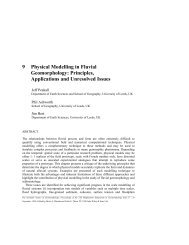Meyniana
Meyniana
Meyniana
You also want an ePaper? Increase the reach of your titles
YUMPU automatically turns print PDFs into web optimized ePapers that Google loves.
Sediment dynamics and hydrodynamics...... 125<br />
Fig. 5: Salinity [psu] and temperature changes in profiles W1- W6 during high tide calm<br />
conditions.<br />
The particulate matter was found to be mainly in form of flocks, probably bounded<br />
with organic matter.<br />
Bottom sediments<br />
Surface sediments (0-0.5 cm layer) are dominated by the sand fraction (fig. 7).<br />
Aggregates of fine material, which are bounded probably by organic matter are observed<br />
very often on the surface as flocks – similar material up to 2 cm in size is found in<br />
the sediment traps. In many cases, the surface sediments are also enriched in<br />
small admixtures of fines, and in small organisms. Except at the W1 location,<br />
which is dominated by mud, the remaining locations are composed of sand: fine<br />
sand at the W2 station, medium, and medium to coarse sand further offshore. At the<br />
most distal stations, the surface sediments are classified as silty sand. Surface<br />
sediments are characterized by poor sorting, which is an effect of mixing of sands<br />
and fine material, and are usually dark, olive gray, dark brown and green. Relatively<br />
few carbonate organic fragments were found in these samples.<br />
Subsurface sediments (0.5 to about 5 cm layer) are also dominated by the sand<br />
fraction, except for sediments from W1 station, which are muds. In general, an<br />
offshore coarsening trend is observed from mud, fine silt to medium sand. On the<br />
locations close to the Hon Tre Island, the trend is relatively modified and coarse<br />
sands are found close to caps and fine sands in a bay. The sediments are usually<br />
very well sorted. In places, some intercalations of more silty sand similar to that<br />
found on the contemporary surface, are observed. Among the components of the<br />
sand fraction, the lithoclasts dominate. Carbonate fragments of shells and skeletons<br />
of organisms are of secondary significance.<br />
Analysis of satellite images<br />
Satellite scenes are commonly used for the water-quality studies as long as they<br />
register the wavelengths of sunlight efficiently penetrating the water. Landsat<br />
Thematic Mapper (TM) and Enhanced Thematic Mapper (ETM) scanners have four<br />
spectral bands useful for water surface and water column studies, and reasonable<br />
resolution of the pixel (30 m x 30 m). This allow successful presentations of spatial


